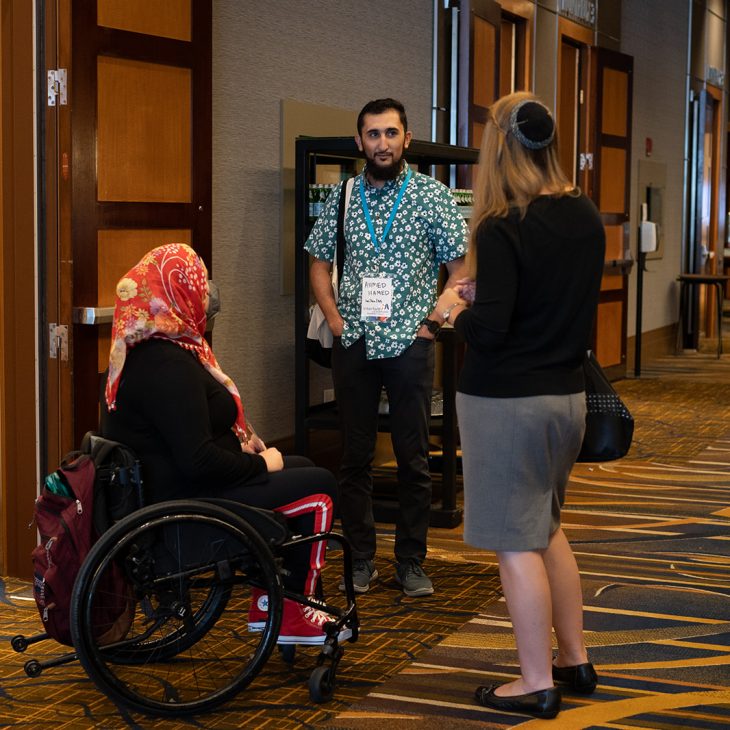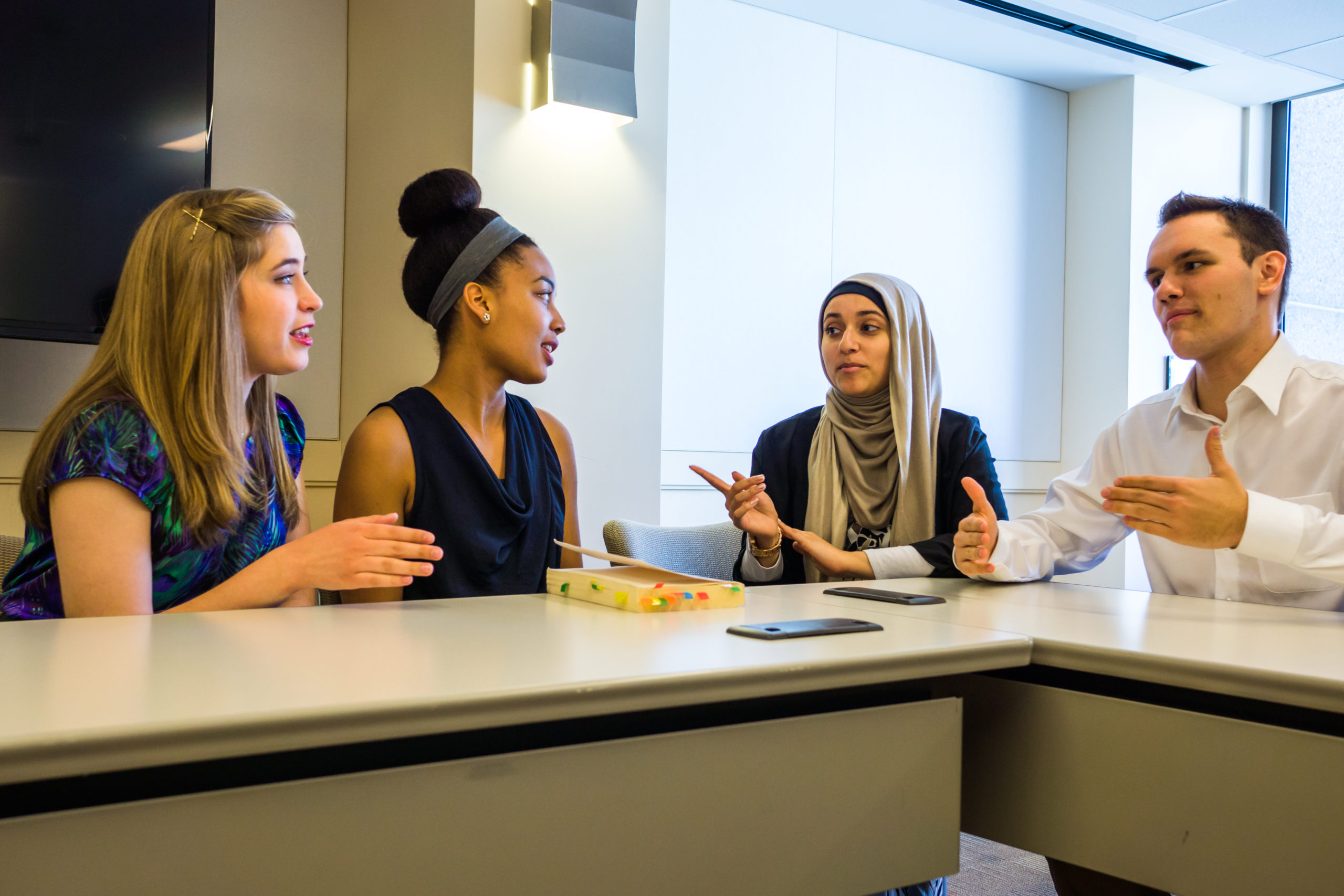How Do We Bridge Deep Religious Differences in Higher Ed?
January 13, 2023

When I read a piece about a controversial topic, my curiosity is piqued. Whose story is being told? What values and life experiences might animate their perspective? Whose stories are not being told, and how might they see the issue differently?
I asked myself these questions when reflecting on the recent news from Hamline University in St. Paul, Minnesota. At Hamline, an art history instructor showed an image of the Prophet Muhammad in class, after giving verbal and written warnings to students in advance. A Muslim student complained to the instructor and the administration because her Muslim tradition prohibits portraying physical images of the Prophet, and the instructor was asked not to return to Hamline this spring.
From what I’ve read, it seems the professor was highly sensitive to students’ religious identities. She found academic value in showing the image, and yet she knew the potential for conflict given many Muslims’ convictions about not displaying physical images of the Prophet. She took care to frame the image intentionally and provide advance notice multiple times, both verbal and in writing, as well as the option to opt out of viewing the image. This is the kind of radar screen for religious diversity and sensitivity to diverse identities that all faculty members should have, regardless of their disciplines. As Senior Director of Higher Education Strategy at Interfaith America, I have worked for years with staff, faculty, and administrators at colleges and universities nationwide to build this kind of professional capacity around engaging religious diversity.
And yet – despite the professor’s intention and care – a Muslim student in her class nonetheless experienced the image as offensive and problematic. This highlights a core challenge of religious diversity work: It often involves irreconcilable differences of perspective. The faculty member had one experience and intention, and the student had a completely different experience of the same event. It is easy to rush to quick judgments of one or the other, to claim the faculty member was Islamophobic or the student was overly sensitive. But perhaps we can approach the situation differently, viewing each of them with empathy and generosity.
When engaging in challenging situations related to religious diversity, how can we support and affirm impacted individuals while also inviting relationship building, engagement with discomfort, and expansion of learning, rather than rushing to labels, judgments, or quick decisions?
There are no quick fixes or easy answers. But actively engaging the complexity and asking questions from a place of curiosity and compassion can help us begin to identify paths forward. At Interfaith America we often use case studies as a pedagogical approach. Case studies create space for students and educators to practice perspective taking, considering how different impacted individuals see a challenging situation differently and exploring productive responses. Some of the many ways to explore the complexity at Hamline and other situations include:
Balancing competing values: Providing care and support for students who feel impacted by an experience like this is essential. And institutions must also consider how to balance support for students with other mission-critical values, including the need to protect faculty experts’ academic freedom and the value of exposing students to ideas that while blasphemous for some, may be foundational or transformative for others.
Considering context: We ought to consider the context in which an incident occurs. “As a Muslim and a Black person, I don’t feel like I belong,” the impacted student shared, suggesting a lack of belonging on campus generally. How does considering this context help us better understand and empathize with her decision to complain about this incident? Had she had a different experience on campus overall, might she have been equipped to navigate this particular experience of offense in class in a different way? And how can institutional leaders foster self-reflection within the campus community, not only about this one challenge but about creating an inclusive and welcoming climate more broadly? Swift action may lead to short-term resolution of a particular issue, but it is unlikely to resolve deeper systemic problems or build the type of mutual understanding that a campus community needs to thrive when deep differences and individuals with diverse identities are present.
Understanding diversity within traditions: It is important to remember that traditions (religious, cultural, or otherwise) are internally diverse. The Muslim student impacted by this incident felt deeply offended by it. Yet many Muslims and scholars of Islam spoke up offering a different approach to how their tradition relates to physical images of the Prophet. As a non-Muslim, I approach this with humility. In my own Jewish community, we similarly have divergence of perspectives on nearly any topic, particularly on how to define and identify antisemitism, an issue that I have worked on extensively. It is often difficult to understand the breadth of perspectives within another tradition, and to contextualize which perspectives may be mainstream versus fringe. But this is an opportunity to listen and learn from both adherents and scholars of that tradition. It is an opportunity to open up learning within a campus community – to expand religious literacy and highlight diverse and divergent voices rather than offering a singular perspective.
On college campuses in a religiously diverse democracy, it is inevitable that deeply held values and beliefs will come into conflict with one another, but we can choose to address that complexity head-on rather than avoiding it. When we pursue relationships and build bridges across those divides, we can also lean on those relationships when situations become tense. Interfaith America’s Bridging the Gap (BTG) program teaches skills to truly listen, understand, be heard, and seek common ground across divides – without avoiding disagreement or compromising deeply held values. These skills enable students and educators to lean into areas of deep disagreement in productive ways. For example, BTG alum Jamie Goulet created a club at Spring Arbor University (SAU) that used listening and storytelling to explore difficult topics, intentionally holding space for people to feel heard no matter where they stood. During women’s history month, they partnered with the office of intercultural relations and the pro-life club to host a discussion about abortion, intentionally recruiting participants from multiple viewpoints. Jamie reflected, “I felt it was important to have this difficult conversation at SAU… I wanted to bring to light that not everyone thinks the same, even Christians.”
I hold hope that the students, faculty, and administration at Hamline will continue to reflect on this incident and its reverberations, and that they will take steps to listen deeply to each other and emerge from this as a stronger campus community. I also hope that as we navigate similar challenges related to religious diversity across the higher education sector, that we as educators and administrators will approach them with an ethos of generosity and curiosity; that we will acknowledge our own knowledge gaps and fill them by listening to a multitude of perspectives; and that while we unwaveringly support our students in their diverse identities, we will also continue the hard but essential work of encouraging both ourselves and our students to build relationships across divides and engage productively with ideas that deeply challenge us.
Rebecca Russo is the Senior Director of Higher Education Strategy at Interfaith America.
Share
Related Articles
American Civic Life
Higher Education
Higher Education

Webinar Conversation
Art, Religion, & Academic Freedom
A distinguished panel of educators discuss the recent events at Hamline University and suggest constructive ways for leaders in higher education and other sectors to navigate conflicts in a religiously diverse democracy.
Learn more


